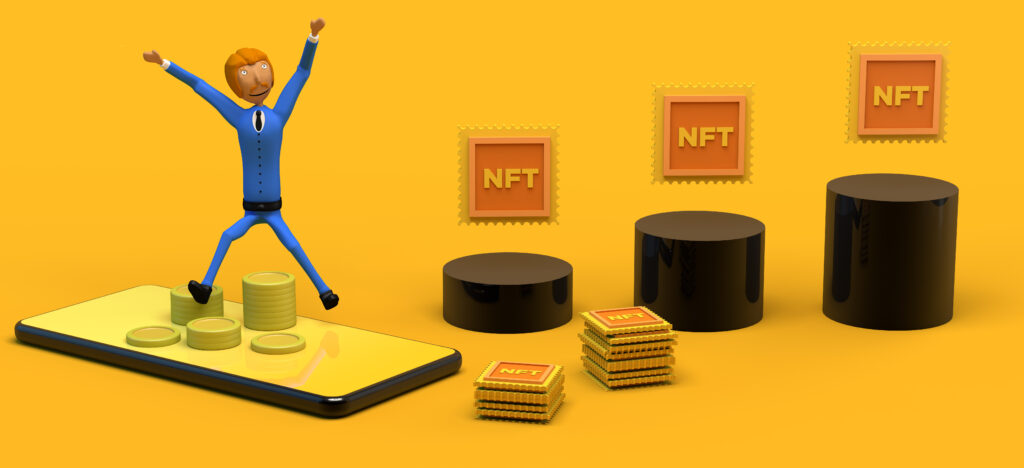Learn how to stake NFTs for passive income, explore top NFT staking platforms, and discover strategies to maximize your crypto investment returns.

NFT staking has become a popular trend in the blockchain space that allows users to earn passive income from their digital collectibles. Instead of just holding NFTs in your wallet, you can “lock” them up on specialized platforms to get rewards over time. This turns a static investment into a dynamic asset that gains value even when you’re not trading. In this post we’ll go over the basics of NFT staking, how to get started and share some tips to help you get the most out of it.
The Basics of NFT Staking
What is NFT Staking
NFTs are unique digital assets often representing art, virtual collectibles or even in-game items. Unlike standard cryptocurrencies, each NFT has its own attributes. NFT staking is depositing these tokens into a dedicated smart contract or platform. In return you get staking rewards – often in the form of native platform tokens or other digital assets – for holding your NFTs in a safe environment.
How NFT Staking Works
It’s similar to traditional crypto staking but with a twist: you’re using NFTs instead of fungible tokens. To stake your NFTs you connect your crypto wallet to an NFT staking platform, select which NFTs to lock up and then wait while the smart contract distributes rewards. Behind the scenes your NFTs are helping to support the platform’s ecosystem, liquidity and overall market health.
Key Benefits of Staking NFTs
Passive Income: Instead of leaving your NFTs idle, staking gives you consistent passive income.
Supporting Project Ecosystems: By staking NFTs you’re actively supporting the projects and communities behind them.
Long Term Value Appreciation: Over time as the platform grows and the NFTs appreciate you may see higher returns on your investment.
NFT Staking vs Traditional Investments
Passive Income Generation
Traditional investment vehicles like savings accounts give very low returns. NFT staking gives you much higher yields so it’s a great option for those looking to diversify their portfolio. With crypto passive income opportunities like NFT staking you can beat many traditional financial instruments.
Portfolio Diversification
Leveraging just stocks or bonds can be risky, especially in volatile markets. Adding NFTs to your investment strategy gives you an alternative asset class that behaves differently from traditional investments. Diversifying your portfolio with NFT staking helps to spread risk and stabilize long-term returns.
Supporting the NFT Ecosystem
When you stake NFTs you’re not just getting rewards – you’re also supporting the growth and sustainability of the project. This involvement can extend the project’s life and market value and benefit everyone involved.
Common NFT Staking Models and Approaches
Single Asset Staking
This is the simplest model where you stake one NFT. It’s a great starting point for beginners as it’s easy to understand and manage. You stake one NFT and get rewards based on that asset’s contribution to the network.
Pool Staking or NFT Yield Farming
Yield farming with NFTs is pooling multiple NFTs together, either on your own or with other investors. By combining assets you can tap into more liquidity and potentially get higher staking rewards. This model can be complex and is suited for more advanced investors.
Staking Through NFT Marketplaces
Some NFT marketplaces have staking built in to their platforms. This makes it easy for newbies to start earning passive income from NFTs right away.
Comparing Popular NFT Staking Platforms
Criteria for Choosing a Platform
When choosing an NFT staking platform consider:
Security: Look for audits, reputable partners and solid smart contracts.
Liquidity: Higher trading volumes means more stable and better rewards.
User Interface: A beginner-friendly platform makes staking easier.
Fees and Terms: Check out platform fees, lock-up periods and withdrawal conditions.
Read Platform Reviews and User Feedback
Before you stake your NFTs check out community forums, Reddit and Discord channels for unbiased opinions. User reviews will help you spot potential pitfalls and discover hidden gems. Do your research.
A Step-by-Step Guide to Staking Your NFTs
Set up your Crypto Wallet
You’ll need a compatible crypto wallet like MetaMask to store and stake your NFTs. After installation, store your seed phrase in multiple offline locations. Consider enabling 2FA for extra security.
Selecting NFTs to Stake
Not all NFTs are created equal. Look for assets with strong community support, established project roadmap and utility within their ecosystem. Risk and reward balancing is key: a rare NFT with high potential upside might give better returns than a common one.
Connecting to a Staking Platform
Go to your chosen platform, connect your wallet and approve the smart contract interactions. Once you’ve confirmed the transaction your NFT will be staked and you’ll start earning rewards.
Monitoring Your Staking Rewards
Keep an eye on your staking dashboard to see your earned rewards, market fluctuations and NFT values. Monitoring performance will help you decide when to unstake, re-invest or move your NFTs to other platforms for better returns.

How to Optimize
Timing the market
Market conditions affect your staking rewards. Staking your NFTs during a bull run will give you higher returns as demand increases. Stay up to date with market news, DeFi and NFTs trends and project announcements.
Diversify Staked Assets
Spread your NFTs across multiple platforms and projects to minimize risk. This way, even if one platform underperforms, your overall returns will be stable.
Re-invest and Compound
As you earn rewards, consider re-investing them into new NFTs or additional staking pools. Compounding will accelerate your portfolio growth over time.
The Cons of NFT Staking
Market Volatility
NFT values can fluctuate wildly. If you’re earning staking rewards and the underlying NFT value drops your overall returns will suffer. Consider risk management strategies like setting target sell points.
Liquidity
Some platforms have lock-up periods so you can’t liquidate your NFTs immediately. If you need quick access to funds, illiquidity can be a problem. Always check the platform’s terms before staking.
Regulatory and Tax
As NFT staking and crypto passive income models evolve, so do the regulations. Keep records of your gains and losses and consult a tax professional to ensure you comply with local laws.
What’s Next for NFT Staking and DeFi?
Cross-Chain Staking
The future of NFT staking might be cross-chain solutions. This would give investors more flexibility to move NFTs and capture opportunities on multiple chains.
Metaverse and Gaming NFTs
As the metaverse grows NFT staking will intersect with gaming NFTs. Imagine earning passive income by staking in-game items or virtual land, creating new revenue streams and adding value to digital worlds.
Changing Rewards
Future staking platforms will have dynamic reward structures and incentives. From special NFTs to flexible APYs, the models will get even better.
Start Earning Passive Income With NFT Staking
NFT staking is a game changer for digital collectibles. Instead of sitting in your wallet, NFTs can be engines of passive income, boosting your crypto portfolio and supporting the most innovative blockchain projects. By choosing good platforms, doing your research and diversifying your assets you can navigate the NFT staking space.
Get started today: set up your wallet, choose good NFTs and start earning passive income from these digital assets. With planning, informed decisions and a long-term view, NFT staking can be a key part of your crypto strategy.
FAQs
Q: Is NFT staking safe?
A: Staking can be safe on good, audited platforms. Always research, read the security audits and understand the platform’s reputation before committing.
Q: How much can I earn staking NFTs?
A: It varies. NFT rarity, platform APY and market conditions all come into play.
Q: Are staked NFTs locked up?
A: Some platforms have lock-up periods, others let you unstake anytime. Check the terms before you commit.
Editor’s note: This article was written with the assistance of AI. Edited and fact-checked by Owen Skelton.







